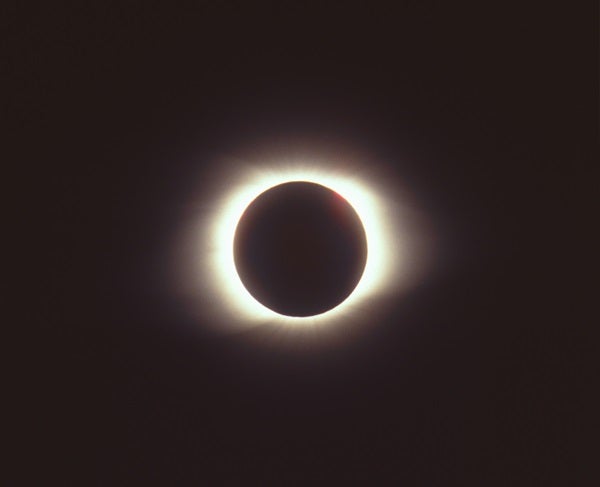Several readers wrote to say the article had persuaded them to spend the money and travel to see it. I felt honored. So now, though the eclipse is still in the future, let’s talk about a bottom-line basic: What should you look for?
I just re-read James Fenimore Cooper’s beautiful short story, “The Eclipse.” It’s worth getting hold of, though it’s just 15 pages long. (One option: It’s part of a collection of space-based short stories called The Saturn Above It.) Cooper, a popular 19th-century author, is famous for The Last of the Mohicans. In this wonderful account written in his 40s, he recalls the total solar eclipse he saw as a youth in his hometown of Oswego, New York, in June 1806.
It’s fun to see how people lived back then, and to share the author’s impressions. Having now led nearly a dozen eclipse expeditions since 1970, and watched the reactions of tour members, I love what totality does to people. What surprised me in Cooper’s story was how different the focus was two centuries ago. Back then, everyone was obsessed with how the light faded and then returned, how the stars came out, and how the Moon looked black.
Understandable. We normally perceive the Moon as a white illuminated shape, but during totality, we solely observe its black night hemisphere. It’s the only time we can see the New Moon. People of the past loved this aspect of the event.
Watching that black Moon noticeably shift position was another major eclipse wonder back then. The Moon’s orbital speed of 1 kilometer per second is dramatic and majestic during eclipses.
“AT TOTALITY, ESPECIALLY THROUGH BINOCULARS OR A SMALL TELESCOPE, LOOK FOR DEEP-PINK PROMINENCES OF NUCLEAR FLAME.”
Same with the diamond ring. Until the New York City totality of January 24, 1925, there was no name for the intense pinpoint of direct sunlight often seen just before or after totality. Because it had no name, no one looked for it. Cooper doesn’t give the phenomenon a single word. And yet these days, observers deservedly make a big deal about it.
What else should the newbie look for during totality? Well, first, in the five to 10 minutes before totality, put down your filter and notice how the Sun illuminates the countryside around you. Cars, trees, buildings — the familiar now seems alien. When the Sun has been reduced to a mere crescent, its light comes exclusively from its limb, plus the solar disk is no longer its customary half-degree size. Both these factors dramatically change the quality of sunlight. It’s as if we’re illuminated by a different kind of star. Colors seem more saturated, contrast is boosted, shadows have strangely sharp edges. Dappled regions like tree and bush shadows contain innumerable bizarre crescents. It’s an otherworldly experience.
Then in the one to two minutes before totality, if you are on a white surface or have spread a sheet, you may suddenly see shadow bands. These are shimmering dark lines rippling along the ground. They cannot be photographed. Videos and stills appear with them absent!
The arrival of totality may be heralded by that diamond ring. At totality, especially through binoculars or a small telescope, look for deep-pink prominences of nuclear flame. And that corona, with its stunning beauty. Yes, you can look for stars, but totality does not produce very deep darkness. Your surroundings resemble that of a Full Moon night.
Beyond the science and the aspects lending themselves to verbal description is a feeling, a flavor, a vibe. Totality feels like nothing else in life. Just let it in. I still can’t explain it rationally. Something happens when the Sun and the Moon and your spot on Earth form a perfectly straight line. As my ex-wife put it, “It felt like the home of my soul.”
Cooper didn’t put it that way. It was a different time then. He ended up saying, “I’ve traveled the world and sailed the seas, but never have I beheld any spectacle which so plainly manifested the majesty of the Creator, or so forcibly taught the lesson of humility, as a total eclipse of the Sun.”











